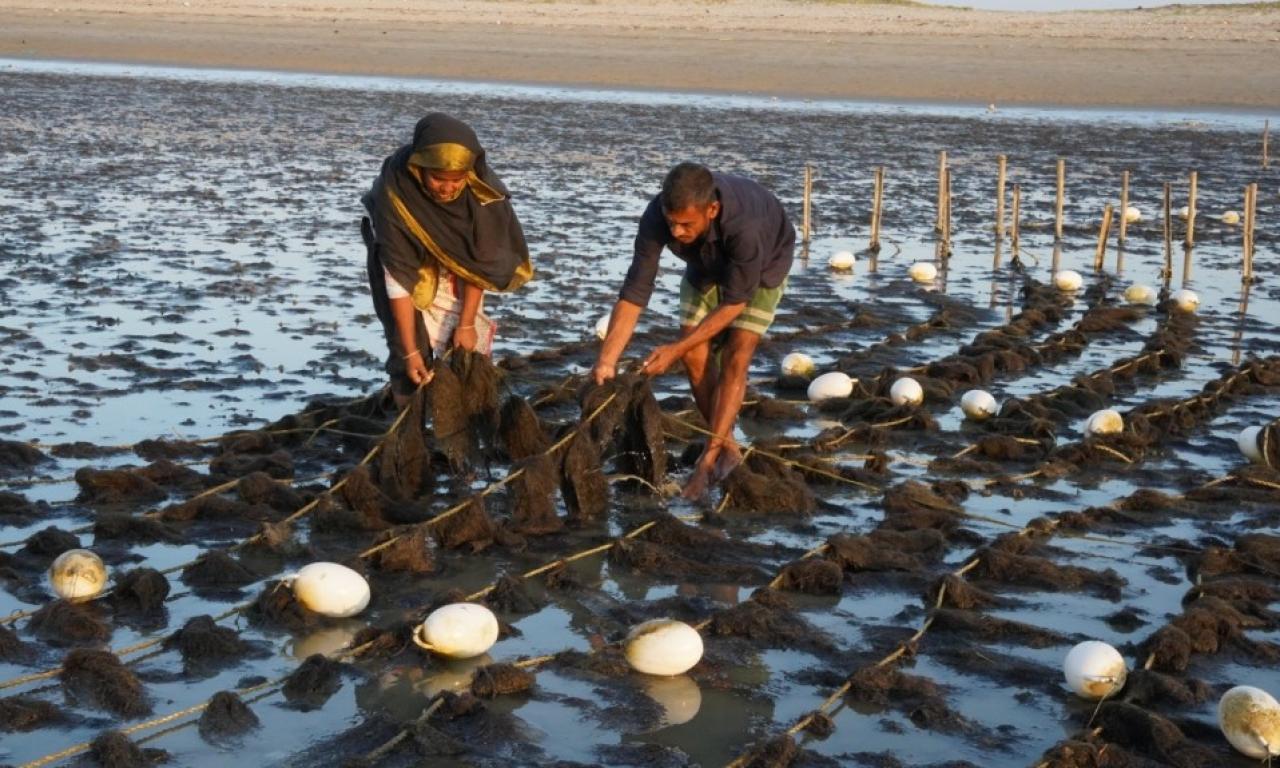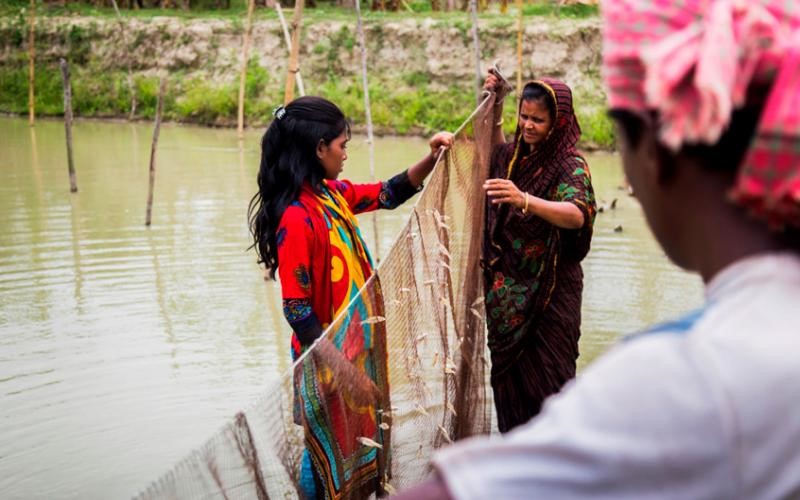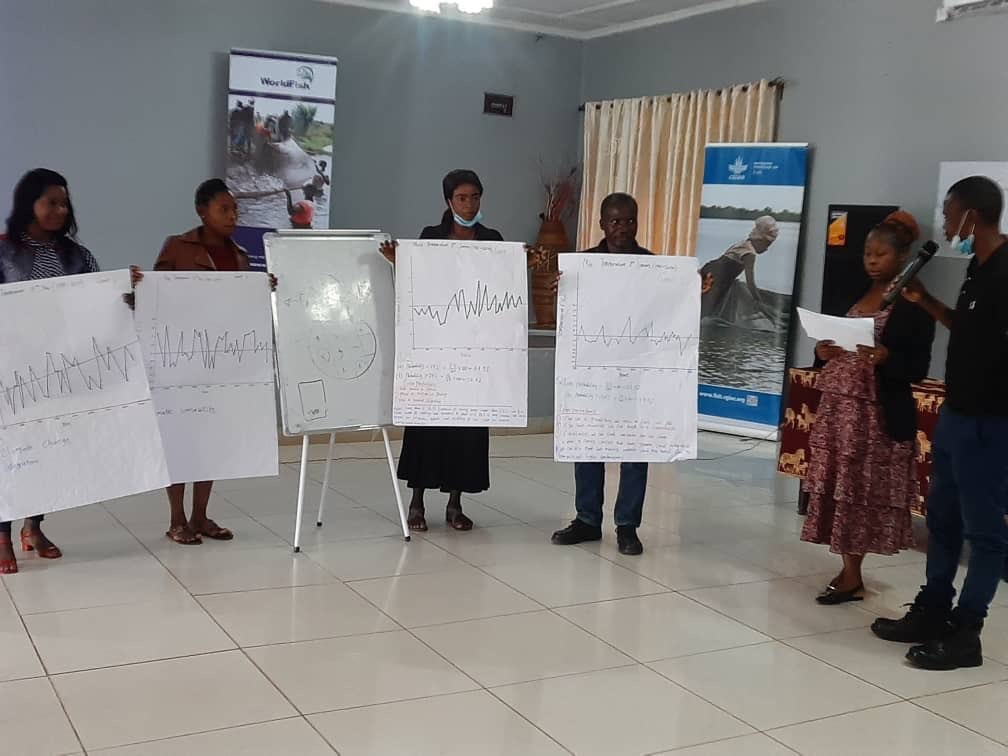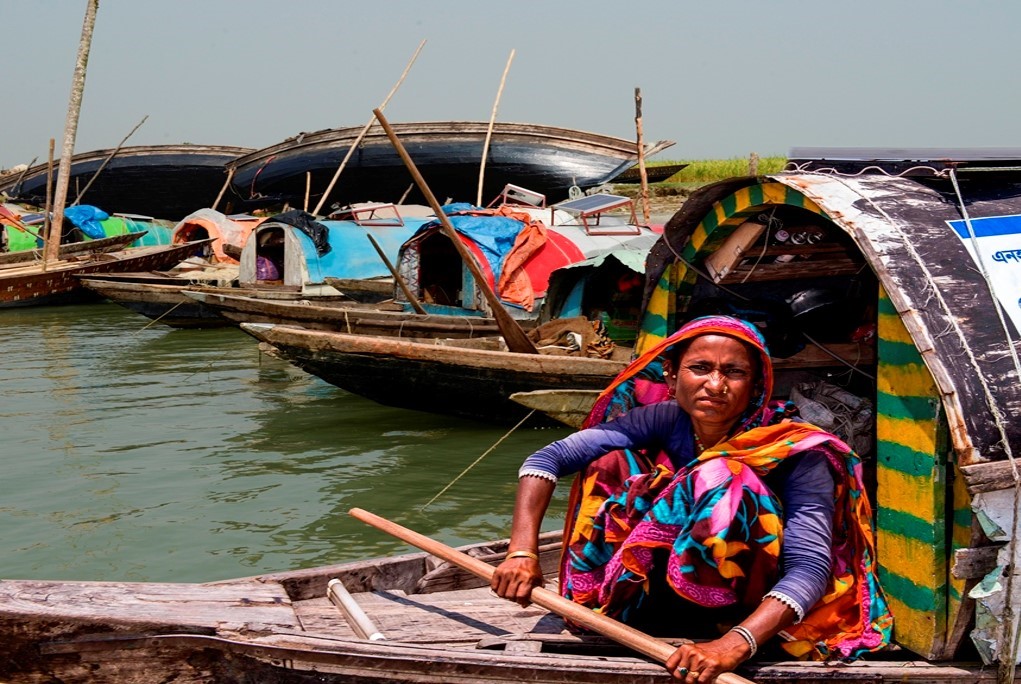
- Immediate and collective action on climate risk management, sustainable blue financing and inclusive policy instruments recognizing aquatic food systems’ shared prosperity are urgently required for climate-resilient aquatic food systems
- Setting up a climate adaptation pathway map is instrumental for climate-resilient aquatic food systems
- Aquatic food systems can lead the way to mitigation if urgent blue climate actions to combat climate crisis are taken into account
The world's largest ecosystem, aquatic food systems, which include freshwater, coastal and marine ecosystems, are directly advancing the 2030 UN Sustainable Development Goals, particularly those related to eradicating poverty, achieving food security, improving nutrition, empowering women and promoting economic growth. These goals are achieved by producing safe and nutritious aquatic foods for the marginalized and most vulnerable communities, as well as indirectly encouraging social and economic inclusion.
More than 800 million people around the world depend on fisheries and aquaculture for their livelihoods while over 3.3 billion people get 20 percent of their animal protein intake from aquatic foods. Women make up half of the primary and secondary sectors’ workforce for aquatic food systems.
More importantly, aquatic food systems act as a catalyst to moderate climate change by absorbing greenhouse gas (GHG) emissions. Oceans house 80 percent of all life on earth and absorb one-fourth of global annual carbon dioxide emissions while providing half of the world’s oxygen. In addition, aquatic food systems have the lowest carbon footprint among agri-food systems – global aquaculture accounts for less than half a percent of anthropogenic GHG emissions.
However, these vast ecosystems have become endangered due to a wide range of global climate crises like unabated rising water temperatures resulting in deoxygenation, acidification and eutrophication, which are threatening life below water and degrading their habitats. Threatened aquatic lives – be they plants or animals – and degraded aquatic environments will not be able to sustainably produce aquatic foods. As a result, aquatic ecosystems’ capacity to curb climate change will be limited if urgent climate-risk management initiatives are not taken into account as part of climate action.
De-risking aquatic food systems for climate resilience in the Asian Mega Deltas

As part of the CGIAR initiative on securing the food systems of Asian Mega Deltas for climate and livelihood resilience (AMD), WorldFish has started work on de-risking aquatic food systems using a climate risk management approach. A previous study has shown that in the Ganges-Brahmaputra-Meghna Delta – Asia's largest and the world's most populated delta – a 1 percent increase in aquaculture productivity could provide 24,000 tons of fish to feed a million people with protein.
This is made feasible by the availability of useful climate data that is produced and disseminated in a timely manner to enable efficient decision-making for climate-risk management. However, the practice of context-specific climate services and the availability of actionable climate information are still in their infancy and no significant attempts have been documented thus far in the Asian Mega Delta countries, which are the most vulnerable to climate change.
An ex-ante economic valuation of climate-induced losses to aquaculture in Bangladesh's deltaic regions was carried out for the evaluation of climate information services (CIS) in order to forward our work on climate-risk management utilizing CIS. This study revealed that aquaculture CIS might have an annual economic value of up to $14 million a year if 10 percent of the damage can be mitigated by proper CIS through a variety of multi-sector initiatives to create and scale up these services to end users.
This suggests that CIS can serve as a tool for reducing risk. Additionally, it was also identified that the digital approach to CIS delivery as a gender-inclusive innovation in light of the need to manage climate risks while taking into account women's participation in supplementary in-house aquatic foods production activities, which has so far limited their ability to participate in daily aquaculture operations and make decisions.
If risk reduction information and services can be made available to our women actors and at the same time if their access to such decision support systems can be guaranteed, women and young people will be significantly motivated to participate in management decisions, strengthen their voice in the decision-making process and increase their capacity for coping with climate change.
Therefore, improving gender-inclusive climate-risk management innovations is essential for the transformation of equitable aquatic food systems at scale. In order to do this, investing in suitable climate-risk management initiatives and including them at the policy level can significantly catalyze scaling up such actions to ensure food and nutritional security, help alleviate poverty and develop resilient, inclusive and productive deltas.
Co-creating inclusive policy propositions for sustainable and climate-resilient aquatic food systems

WorldFish supported Bangladesh's Department of Fisheries' recent initiative to revise the country's national fisheries policy as an inclusive policy is a crucial tool in further strengthening the expanding blue economy footprint of aquatic food systems on the planet. Aquatic food systems have been crucial in helping Bangladesh achieve higher economic, social and environmental sustainability and resilience as well as food and nutrition security.
Therefore, the government of Bangladesh's vision to transform the nation from a lower to an upper-middle-income country by 2031 and a high-income country by 2041, along with eliminating extreme poverty by 2031 and zero poverty by 2041, calls for paradigm shifts in aquatic food systems to increase productivity, economic gain and resilience to climate change.
In an effort to realize this vision, the national fisheries policy revision process has gained momentum, bringing the three pillars of the aquatic food system approach – climate change, environmental sustainability and socioeconomic inclusion. Preliminary results combine local-level inputs from discussions with sector experts and stakeholders, national-level learnings from ongoing research and development programs and a global call for action that gathered traction for aquatic food systems in the past ten years.
The promotion of climate-smart innovations with a focus on climate risk management, adaptation and mitigation measures at scale and mainstreaming gender using disaggregated data for aquatic food systems, among others, has received attention. These include enabling safe and high-quality seed, feed and aquatic foods production as well as improving nutrition-sensitive aquaculture and fisheries. These ideas demonstrate the pressing need for inclusive policy tools for sustainable and climate-resilient aquatic food systems, which take into account the broad range of impacts that these systems have on everything from food and nutrition to socioeconomics to the environment.
Establishing a roadmap toward climate-neutral and nutrient-sensitive aquatic food systems

To accomplish the objectives outlined in the Paris Agreement and the Sustainable Development Agenda, it is essential to integrate climate change initiatives, such as adaptation and mitigation, into the transformation of aquatic food systems. To advance climate action and produce considerable hydro-climatic, ecological, social, economic, environmental and cultural benefits, the appropriate adaptation and mitigation methods must be found.
Locally-led and context-specific nature-based solutions such as climate-resilient fisheries management, climate-smart and nutrition-sensitive aquaculture, coastal and marine culture systems, such as seaweed, green mussel and integrated multi-trophic approach as well as ecological engineering with oyster reefs, among others, can all play important roles in helping aquatic food producers adapt to the effects of climate change and reduce GHG emissions.
For instance, one of the strong indicators to pave the path for climate mitigation through aquatic food systems is the average worldwide ability of seaweed to sequester 173 megatons of carbon annually. Although aquatic foods may have a low carbon footprint, decarbonizing sensitive fisheries and aquaculture operations via the use of evidence-based research and climate-smart technologies is also crucial for their long-term sustainability.
Renewable energy-powered supply chains may include solar-powered aquaculture aeration systems, solar-powered storage facilities, solar-powered tracking devices and solar panels on fishing vessels. Additionally, fish varieties that have undergone genetic improvements, such as G3 rohu and Genetically Improved Farmed Tilapia (GIFT), can shorten their production cycle and hence play a significant part in climate adaptation.
These are only a few options for climate adaptation among many others. In order to achieve climate-neutral and nutrient-sensitive aquatic food systems, it may be helpful to set up context-specific adaptation pathway maps based on the tipping points, both hydro-climatic and socio-economic.
To address humanity's code red – the effects of climate change – all of these reinforce calls for increased investment in climate risk management, adaptation and mitigation of aquatic food systems. A sustainable blue planet urgently needs immediate and collaborative action on climate risk management, sustainable blue financing and inclusive policy tools that recognize shared prosperity through aquatic food systems. Aquatic food systems can lead the way to net zero if a blue transition is seriously taken into account in climate change actions to combat the climate crisis.
Learn more about initiatives to accelerate digital climate services for resilient food systems in the Global South in this video.
